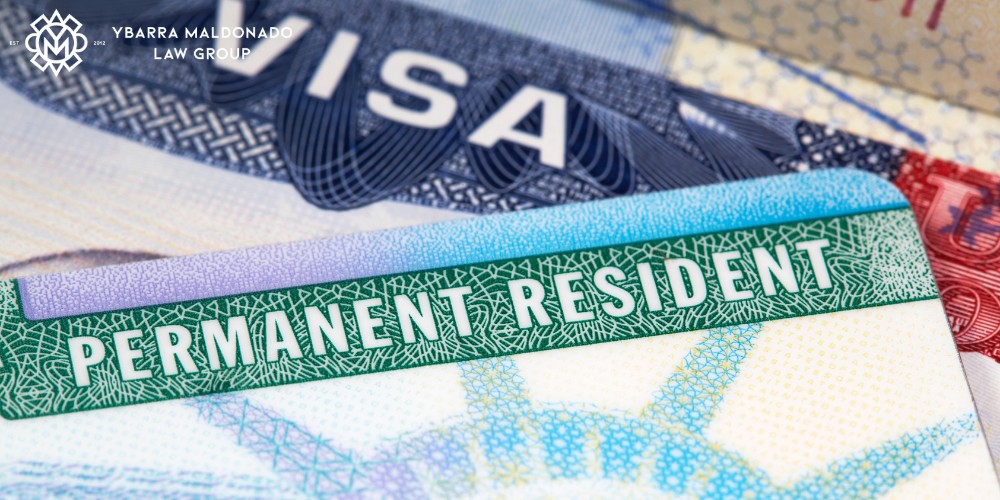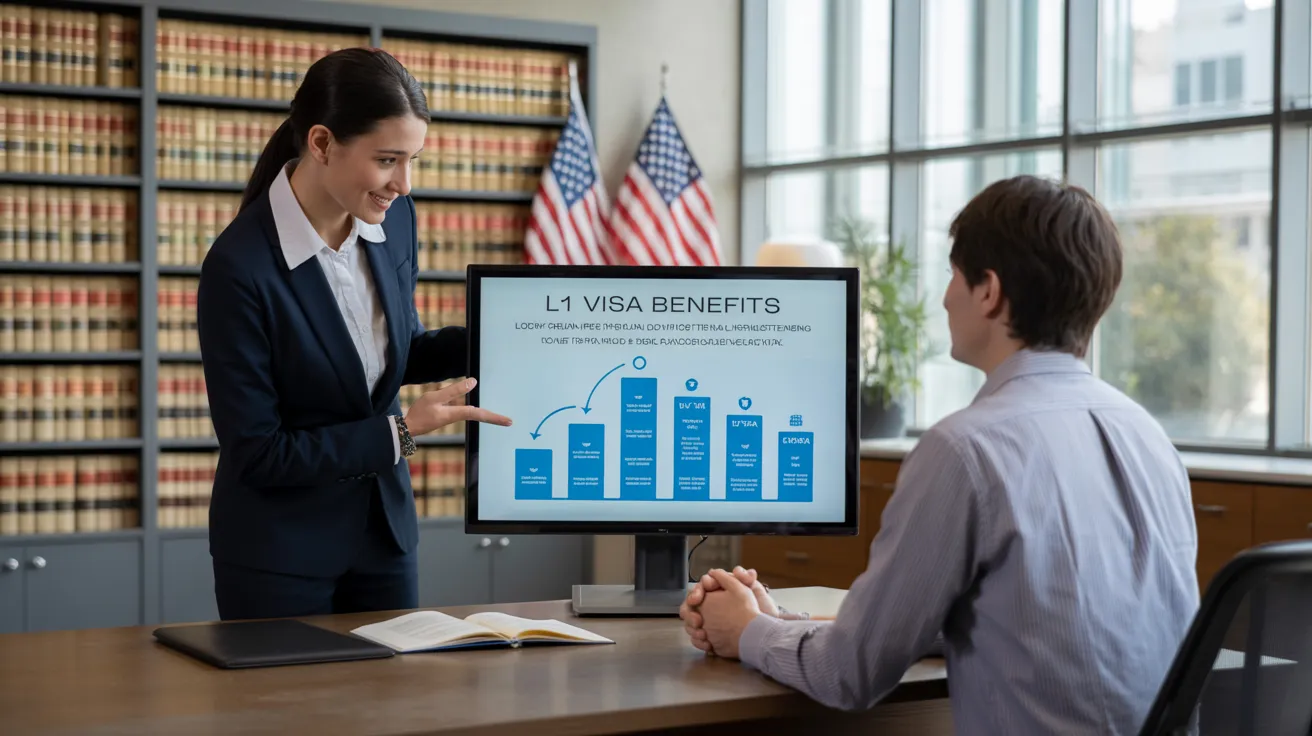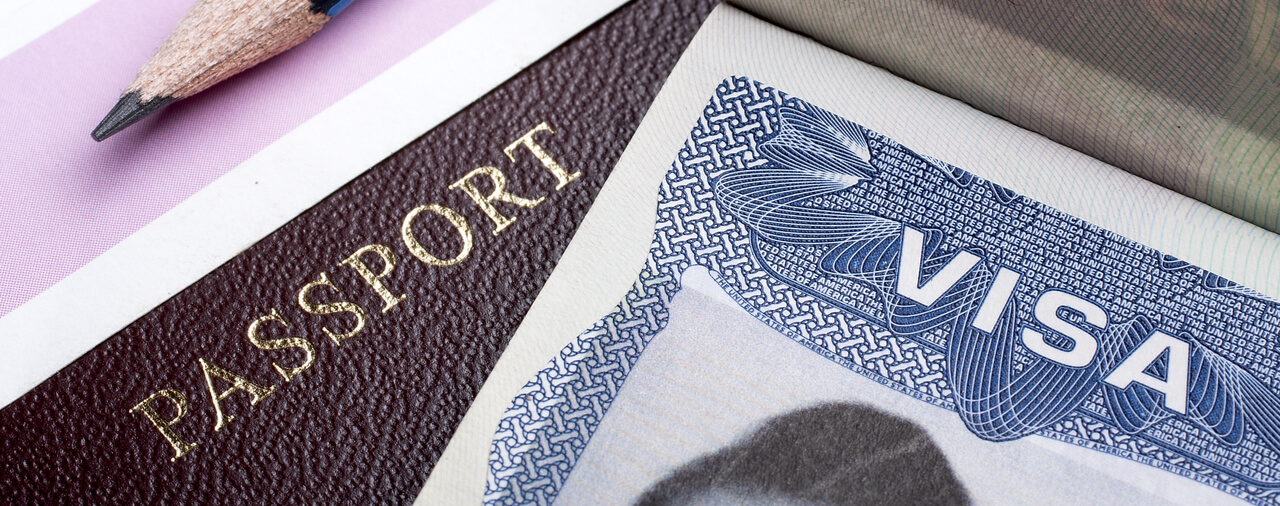Unlocking Opportunities: A Comprehensive Overview to the L1 Visa Process
The L1 visa process presents a crucial path for multinational firms seeking to transfer crucial staff members throughout boundaries. Recognizing the subtleties of qualification standards, the distinctions in between L-1A and L-1B visas, and the complexities of the application procedure can considerably affect a candidate's success. Steering this complex landscape is not without its challenges, and mindful attention to paperwork and company sponsorship is necessary. As we explore the crucial parts of this process, the techniques for getting over potential challenges will come to be evident, exposing how educated prep work can open a world of possibilities.
Comprehending the L1 Visa
Understanding the L1 visa requires acknowledging its relevance as a crucial tool for multinational companies looking for to move skilled employees between global workplaces. This non-immigrant visa group facilitates the motion of executives, managers, and specialized understanding workers to the United States, thereby making it possible for companies to keep operational continuity and harness international skill successfully. The L1 visa is divided right into two primary categories: L-1A for supervisors and executives, and L-1B for workers possessing specialized knowledge.The L1 visa serves a crucial function in improving a company's affordable side in the global marketplace - L1 Visa. By permitting firms to transfer their key employees, services can ensure that critical projects are managed by certified individuals who are already knowledgeable about the company's culture and operational processes. This inner transfer system not just fosters understanding sharing but likewise promotes technology and partnership across borders.Moreover, the L1 visa is usually favored for its reasonably uncomplicated application process compared to various other visa classifications, as it permits twin intent, allowing owners to pursue irreversible residency while on a short-term copyright. This function makes the L1 visa specifically appealing for both companies and employees, as it simplifies the path for competent experts to develop lasting residency in the United States
Eligibility Criteria
Eligibility for the L1 visa depends upon a number of essential criteria that guarantee both the employee and the employer satisfy details credentials. This non-immigrant visa is designed for international companies to transfer workers from international offices to U.S. counterparts.Firstly, the company must be a certifying organization, that includes a parent company, branch, associate, or subsidiary of an U.S. company. The business has to have been doing company for at the very least one year both in the U.S. and abroad. This assures that the firm has enough operational stability and a genuine presence.Secondly, the worker must hold a supervisory, exec, or specialized expertise setting. For L1A visas, the applicant has to demonstrate supervisory or executive credentials, while L1B visas concentrate on specialized knowledge related to the company's items, services, or procedures. In addition, the staff member has to have benefited the international entity for a minimum of one constant year within the last three years before their application.Lastly, the worker's duty in the united state need to straighten with their previous position, making certain that their skills and competence are leveraged for the company's benefit.
Sorts Of L1 Visas
The L1 visa category comprises two primary types created to assist in the transfer of staff members within international companies: the L1A visa for supervisors and executives, and the L1B visa for staff members with specialized expertise. Each kind offers unique purposes and has details eligibility criteria.The L1A visa is customized for people that hold supervisory or executive settings within a firm. This visa enables high-level employees to move to a united state branch, subsidiary, or affiliate of the same organization. Applicants for the L1A visa have to show that they have actually been employed in a managerial or executive capability for at the very least one continual year within the previous 3 years before their application. Additionally, this visa provides a much longer duration of remain, originally given for 3 years, with the possibility of extensions for approximately seven years.In comparison, the L1B visa is meant for specialists with specialized expertise pertaining to the firm's products, solutions, or procedures. To qualify, applicants have to show that their proficiency is critical to the organization and that they have benefited at least one continual year within the last three years in a function that needed this specialized expertise. The L1B visa is at first granted for three years, with expansions offered for up to five years.Both visa types are important for business looking for to improve their international procedures by leveraging proficient personnel, therefore advertising innovation and performance within the U.S. market.
Application Process
Guiding with the L1 copyright process includes a number of vital steps that have to be meticulously complied with to ensure an effective end result. The procedure starts with the united state company, that need to first develop qualification by demonstrating a certifying partnership with the foreign entity and validating that the employee meets the specific demands for the L1 visa category being sought.Once qualification is confirmed, the company initiates the process by filing Type I-129, the Request for a Nonimmigrant Employee, with the U.S. Citizenship and Migration Services (USCIS) This kind needs to be gone along with by a comprehensive summary of the work obligations to be performed, the organizational framework of both the U.S. and foreign entities, and the worker's certifications. It's essential to confirm that all info is accurate and full, as omissions or mistakes can lead to hold-ups or denials.Upon approval of the I-129 request, the following action involves the worker obtaining the L1 visa at an U.S. consular office or consular office in their home nation. This phase needs the completion of Kind DS-160, the Online Nonimmigrant copyright, and arranging an interview. Throughout the interview, the applicant must provide proof supporting their qualifications and the company's petition.After the visa is granted, the staff member can enter the United States to work in the assigned role. Generally, mindful prep work and adherence to every step of the application process are crucial for an effective L1 visa result.
Required Documentation

Essential Forms Required
Steering the L1 Visa procedure needs careful interest to the vital kinds and documents necessary for an effective application. The main type needed is the Kind I-129, Request for a Nonimmigrant Worker, which should be finished and submitted by the united state company. This type outlines the details of the work offer and the certifications of the employee seeking the L1 Visa.Alongside Form I-129, the candidate will require to complete Form I-539 if accompanying member of the family are additionally using for visas. Furthermore, the employer needs to give evidence of the certifying connection in between the united state entity and the foreign entity, commonly demanding the entry of business files such as write-ups of incorporation or financial statements.Moreover, it is important to consist of the L Classification Supplement to Kind I-129, which specifies the kind of L Visa being requested-- either L-1A for managers and execs or L-1B for staff members with specialized understanding. Applicants should L1 Visa law firm assure that all forms are authorized and dated appropriately, as insufficient entries can lead to delays or rejections. Appropriately setting up these vital types lays the structure for a smoother L1 copyright procedure.

Supporting Evidence Needs
Supporting documents is necessary for a successful L1 copyright, as it substantiates the insurance claims made in the application. Applicants have to offer a series of records to show qualification for the visa, which is categorized into two main types: proof of the certifying relationship between the united state and international entities and proof of the candidate's qualifications.To develop the connection, applicants ought to send documents such as corporate business charts, monetary statements, and evidence of possession. These papers verify that the foreign firm has a qualifying connection with the U.S. employer, whether as a parent firm, subsidiary, branch, or affiliate.For the applicant's credentials, vital papers include an in-depth employment letter from the international employer, outlining the applicant's task title, obligations, and duration of employment. In addition, academic credentials, such as degrees and diplomas, ought to be given to show the applicant's proficiency in the relevant area.
Employer Sponsorship Papers

Common Obstacles
Maneuvering the L1 visa process provides a number of common obstacles that applicants need to know. Key concerns usually consist of rigorous documents demands, potential delays in handling times, and the requirement for strict lawful compliance. Understanding these challenges can assist candidates much better prepare and minimize dangers throughout their copyright journey.
Documentation Needs
The L1 copyright process frequently provides considerable challenges connected to documentation demands. Applicants should offer considerable documents to establish eligibility, which can lead to complication and potential delays. Key papers include proof of a qualifying relationship in between the united state and foreign employer, proof of the candidate's work history, and comprehensive information regarding the job function in the U.S.One typical obstacle is gathering adequate evidence to demonstrate the nature of the certifying partnership. Business commonly struggle to existing clear business graphes or monetary statements that show the connection in between the entities. On top of that, making certain that letters of support from employers accurately mirror the candidate's job responsibilities and certifications is essential, as unclear descriptions can cause denials.Another concern arises from the demand for in-depth task summaries that align with the L1 visa categories. Candidates must express not just their existing function however likewise their managerial or specific understanding duties plainly. This requires a comprehensive understanding of both the applicant's position and the regulative language made use of in L1 applications.
Processing Time Hold-ups
Experiencing delays in handling times is an usual difficulty encountered by L1 visa applicants, often resulting in disappointment and unpredictability. Numerous elements contribute to these hold-ups, consisting of high application quantities, raised examination of applications, and management backlogs within the united state Citizenship and Migration Provider (USCIS) Applicants might discover that handling times can differ significantly relying on the service center handling their application, as each center has its very own work and efficiency levels. Additionally, the complexity of the candidate's situation, such as the demand for comprehensive documentation or information, can additionally extend wait times.In some circumstances, issues connected to the applicant's current migration status or previous visa background may likewise cause added delays, as USCIS might need additional testimonial or details. It is necessary for candidates to continue to be positive during this duration, keeping open communication with their companies and legal reps to resolve any kind of possible worries promptly.Understanding these handling time obstacles can assist L1 visa applicants plan for possible delays and minimize the influence on their shift and career strategies. Persistence and persistance are essential virtues in steering this intricate process.
Legal Conformity Issues
Numerous L1 visa candidates encounter lawful compliance problems that can complicate their journey towards acquiring the visa. Understanding and sticking to the certain regulations established by the U.S. Citizenship and Immigration Services (USCIS) is important. Common challenges include showing the qualifying relationship in between the international and U.S. companies, in addition to proving that the candidate possesses the requisite customized knowledge or managerial capacity.Additionally, candidates should supply extensive paperwork describing their task duties, corporate framework, and financial practicality of the united state entity. Poor or imprecise paperwork can lead to delays and even rejections. Companies must likewise guarantee that they follow labor legislations, consisting of wage and functioning condition requirements, which can influence visa eligibility.Another common problem involves preserving compliance with the terms of the visa once approved. Changes in work condition, job responsibilities, or business framework can require amendments to the visa, which if not resolved immediately can result in lawful issues. Consequently, staying educated about conformity demands and seeking legal counsel when required is important to browse the complexities of the L1 visa process efficiently.
Tips for Success
Success in the L1 copyright process commonly rests on careful prep work and interest to information. To improve your opportunities of approval, start by completely recognizing the eligibility demands for both the L1A and L1B visa classifications. Evaluate whether your position at the firm qualifies as supervisory, executive, or specialized understanding, as this categorization significantly influences your application.Next, collect comprehensive paperwork that corroborates your insurance claims. This includes business charts, in-depth job descriptions, and proof of the company's operational structure. Clear and concise evidence of the qualifying partnership between the united state entity and the foreign entity is vital. Validate that all files are arranged realistically and offered in a professional way, as this reflects your dedication and severity regarding the application.Engage the services of an experienced migration lawyer that focuses on L1 visas. Their experience can confirm vital, directing you via complicated regulations and assuring that all documents complies with existing laws. In addition, plan for the meeting by exercising response to usual inquiries and being ready to review your function and payments to the company comprehensive.
Often Asked Questions
Can Family Members Members Go Along With the L1 Visa Owner?
Yes, member of the family of L1 visa holders, consisting of spouses and single youngsters under 21, can come with the main visa holder. They may likewise request L2 visas, which enable them to stay in the United States.
For How Long Can I Remain on an L1 Visa?
The L1 visa permits first keeps of up to 3 years, with the possibility of extension. L1A visa owners may stay for a maximum of seven years, while L1B visa holders can stay for five years.
Can L1 Visa Holders Look For an Environment-friendly Card?
Yes, L1 visa owners can obtain an eco-friendly card. L1 Visa Requirements. They might pursue irreversible residency via employment-based categories, typically requiring sponsorship from their company, offered they fulfill the necessary certifications and documentation needs
What Takes place if My L1 copyright Is Refuted?
If your L1 copyright is rejected, you might receive a notification outlining the reasons for rejection. You can seek to appeal the choice, reapply, or check out alternate visa options based on your circumstances.
Are There Any Traveling Constraints With an L1 Visa?
An L1 visa generally enables international travel; nonetheless, re-entry to the U. L1 Visa Requirements.S. is contingent upon preserving legitimate status. Tourists must assure conformity with visa problems to stay clear of complications upon return
Conclusion
